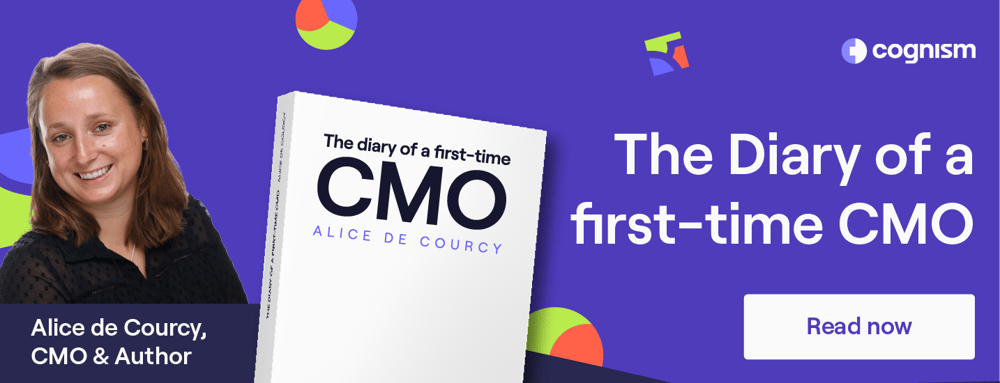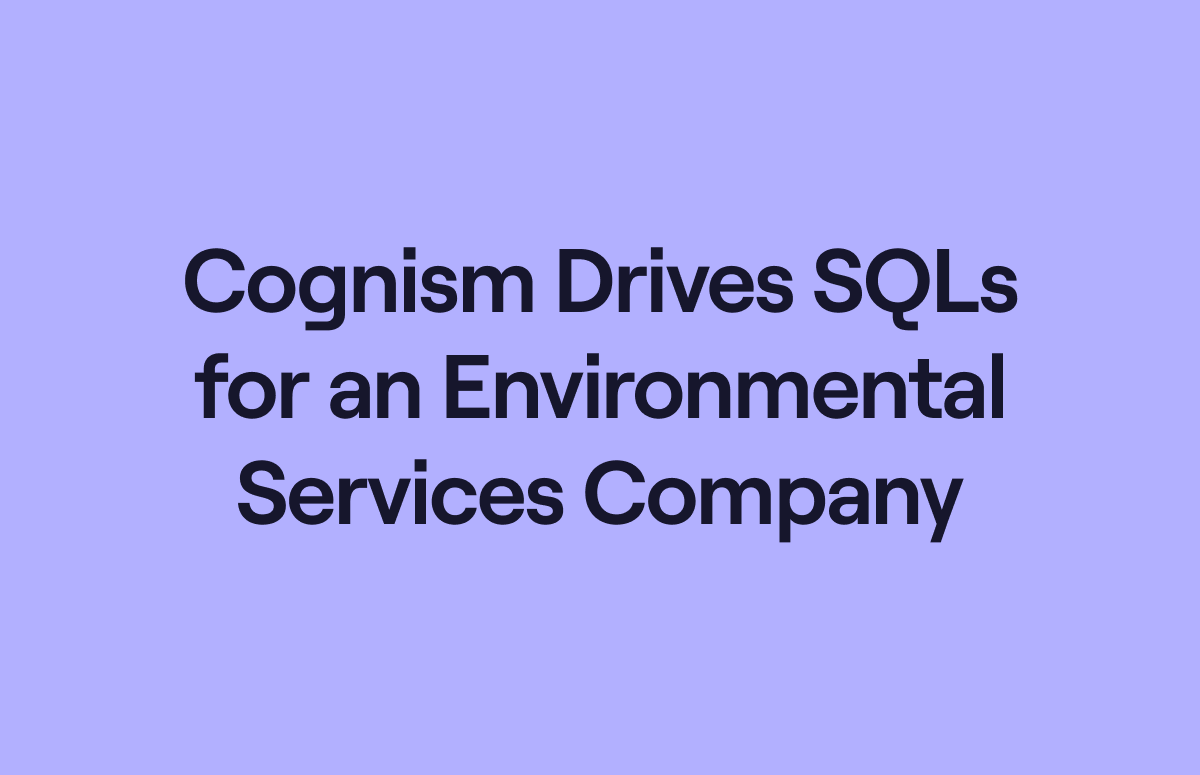How to Upgrade Collaborative Marketing to Amplify Impact
What's on this page:
A collaborative approach to marketing is becoming increasingly common in our interconnected, digital-driven world. In fact, one survey of marketing professionals found that more than 50% now see partnerships as a way of increasing revenue and brand awareness.
Done correctly, collaborative marketing combines the expertise and visibility of multiple organizations, meaning your campaigns have better outcomes for a reduced cost. That said, it also comes with risks for first-timers and big-name brands alike.
This page will focus on collaborative marketing's meaning for marketers and wider organizations. It will also cover everything you need to know to lay the technical groundwork for this collaboration and steps to ensure its success at an enterprise level.
What is collaborative marketing?
Collaborative marketing, in short, is when two or more businesses pool their resources to deliver marketing campaigns with enhanced market penetration and engagement.
You may have also heard the term ‘co-branding’, which is essentially the same thing but specifically refers to when each company’s logo is visibly attached to a co-created marketing campaign. This symbolizes a sort of partnership between equals, where both brands are pulling together to achieve a common goal—that is, to symbiotically expand their influence.
So, why do brands participate in collaborative marketing?
Let’s sum up the main advantages:
- You get to share the spotlight, meaning your marketing efforts go further without breaking the bank.
- You unlock access to new audiences without the hassle of cold introductions.
- Two brains (or more) are better than one, sparking creative ideas you might not have cooked up on your own.
- You'll have extra hands on deck, spreading the workload so you can focus on what you do best.
- It's a trust booster—when customers see brands they love teaming up, they're all in.
But aren’t there some risks to working together?
Yes. And it’s why brands are picky about the companies they choose to work with. You should be aware of these potential downsides before embarking on your next collaboration:
- Working with a direct competitor is complicated and can cause feelings of mistrust.
- Sometimes, too many cooks in the kitchen mean you might not get to call all the shots.
- If your partner messes up, it can stain your brand too—think of it as ‘guilty by association’.
- If you and your partner aren't on the same page, your message might get lost in translation or diluted.
- There's a risk of overshadowing if one partner gets unequal exposure.
Want some great tips from Cognism CMO on building in-house SaaS marketing teams? Check out Alice de Courcy's Diary of a first-time CMO.👇

What tools facilitate collaborative marketing?
Marketing collaboration tech plays a central role in marketing partnerships because it brings people—often dispersed across multiple office buildings or cities—together. With tech on your side, you're looking at easier collaboration, a happier team, and, ultimately, more effective campaigns. Let’s look at some specific areas where you can use digital tools to shape your collaborative efforts:
1. Integrated platforms for resource sharing and coordination
Integrated digital platforms mark a significant leap in how marketing teams approach team projects. Multiple users can jump in, make edits, and leave comments in real-time, with a complete version history at your fingertips.
The contrast with legacy systems—where updates meant sending files back and forth—is stark. Now, imagine the efficiency of directly annotating a shared document instead of the cumbersome process of emailing requests.
The benefits of integrated software are manifold; they save time, enhance transparency, and ensure every suggestion is captured without clogging up your inbox.
2. Communication tools enabling real-time remote cooperation
Remember when working remotely meant feeling out of the loop? Those days are gone, thanks to digital communication tools that allow asynchronous work.
These platforms experienced something of an awakening during the pandemic years (when remote working became a necessity), culminating in greater market penetration and the development of new functionalities. Think of features like screen-sharing, video conferencing, scheduling meetings and meeting recordings with a single click.
These days, 25% of US companies offer their staff the opportunity to work entirely from home or as part of a hybrid model. This means that most companies already know how to use and implement these tools, and there’s no reason why they shouldn’t be extended to collaborative campaigns.
3. Cloud storage provides easy access to shared materials
Cloud storage is another cornerstone of effective collaboration in marketing. It keeps all campaign-related materials in a centralized repository for everyone to access.
Think of services like Dropbox. It's simple: your files live online, so anyone on your team can access them from anywhere, anytime. Need the latest campaign images or that shared presentation? It's all there, a few clicks away.
With a cloud system, crucial data won’t become siloed in email chains or clunky USB hard drives; rather, it creates a wholly synchronized workflow.
Let’s take the example of when you’re gearing up for an exclusive product launch. This is a time when you really don’t want departments chasing each other’s tails and panicking—you can just refer them to the common storage platform to find what they’re looking for.
4. Streamlined collaboration through automation software
Automation software does what it says on the tin—it turns routine marketing tasks into automated actions, saving your team members from the hassle of doing everything by hand.
A great example of a use case is lead marketing automation. Imagine never having to worry about qualifying and nurturing leads after they enter the funnel. In collaborative marketing, this is a blessing.
You can set up tools to enrich and send leads into email nurture or drip campaigns or send them straight to the right salesperson. This reduces the risk of disjointed or unequal campaigns because the message hits the mark.
Moreover, staying updated with email marketing trends becomes more manageable when your routine tasks are automated. You can focus on leveraging the latest strategies, like personalized content and AI-driven insights, to stay ahead of the curve.
5. CRM systems for customer data collaboration and coordination
Think of Customer Relationship Management systems as your marketing team's bible. These platforms are a treasure trove of info on your customers.
For collaborative marketing efforts, this means you can tailor your campaigns with laser precision, targeting the right people with the right message. No more guesswork or one-size-fits-all campaigns.
Whether it's segmenting audiences for personalized email blasts or tracking the customer journey to fine-tune your strategies, CRM systems help you and your partners stay on the same page and hit those marketing goals together.
Organizations with unique aims and financial setups, such as non-profits or foundations, should consider tailor-made software. For example, NGOs can take advantage of platforms with non-profit CRM functions that also give a project overview to track funding and grant status.
Collaborative marketing can be a great boost to those with tighter budget constraints. Specific softwares such as this can provide greater audience insights as well as provide the data needed for final accountability reports.
How to upgrade enterprise collaborative marketing?
Enterprise collaboration in marketing is a high-stakes game. To hit your goals, you must be prudent throughout the entire strategic process. This section covers top tips in a step-by-step guide.
1. Set clear objectives for amplifying impact and engagement
Before diving into the marketing deep end, it’s crucial to know exactly what you’re aiming for. That’s why setting clear objectives is your first priority. Employing the SMART criteria ensures these goals are not only well-defined but also measurable and attainable within a set timeframe.
If a campaign doesn't deliver, brands need to know when to pivot or back out, and objectives are your guide for when to pull the trigger. On top of this, they provide clear evidence for stakeholders and management to be comfortable when committing to these decisions.
2. Identify stakeholders and departments for collaborative initiatives
The next step is to round up your key players. We’re talking about identifying every stakeholder and department that’s got a stake in the game. From marketing to sales, product development to customer service—everyone’s input can turn a good campaign into a great one.
For instance, if you're collaborating in the tech startup space, your R&D team and digital marketers should combine their strengths to deliver a potent message on how your brands are changing the game with their innovation.
Alternatively, if you’re a retailer, you’ll want to make sure that your marketing teams have the most up-to-date sales and forecasting information so they can adapt marketing strategies and make informed decisions.
To achieve this, you can use retail business software to gain insights into inventory levels, sales data, and profits. It will allow your marketing teams to see what’s working on the shop floor, what impact their campaigns have had, and where the focus of your marketing collaboration should be so that it continues to be mutually beneficial.
Regardless of your sector, you must identify and bring together cross-party input to fuel a campaign that truly *clicks* with your audience.
3. Evaluate current collaboration tools to identify functionality gaps
Next up, you should conduct a thorough assessment of existing software that your business and partners rely on. Focus on examining:
- The efficiency of real-time communication features.
- The capability for seamless file sharing and concurrent editing.
- The degree of interoperability with enterprise systems.
- The overall user experience and access controls, security, and compliance considerations.
- The adaptability of the tools to accommodate expanding project scopes.
This diagnostic process is key to identifying functionality gaps and selecting more advanced, fit-for-purpose collaboration technologies.
4. Adopt integrated platforms and collaboration software
Ready to level up your tech stack? Here’s how to make the switch:
- Audit your current marketing tools and identify what’s missing (see above).
- Research platforms that fill those gaps and offer cloud-based flexibility.
- Plan a phased rollout to ease your team into the new system.
- Train your team, making sure everyone is comfortable with the new setup.
- Monitor and adjust accordingly.
There’s always a risk with adopting new software that your staff gets stuck on how to use it — which means one step forward and two steps back. So, as your team gets the hang of the new platforms, keep a close eye on productivity levels and feedback.
Be ready to swoop in and provide more training on-the-job, and hold open conversations with your collaboration partners on how they’ve adjusted to the tech. You never know; they may have some valuable information to share.
5. Implement robust security measures for data protection
Collaborative marketing strategy involves the handling and storage of not just your customer’s data but your business partner’s data as well. If you fail to safeguard this information, it’s both unethical and potentially illegal, as your brand could be sued for negligently leaking trade secrets or personal data.
So, get started by establishing a foundation of solid cybersecurity protocols—things like strong passwords, two-factor authentication, and encrypted communications are non-negotiable. Make sure everyone knows not to leave their digital doors open by instilling a culture of vigilance and security.
From here, you may conduct regular audits and penetration testing to root out vulnerabilities and address them before they become a bigger issue. And let's not forget about secure, cloud-based storage options that keep your precious info locked up tight.
This way, when you're sharing campaign insights or customer data, you know it's safe from prying eyes. If possible, shoot for the ISO 27001 certification to convince your B2B partners you’re serious about security.
6. Provide training on collaborative tools and data-sharing best practices
Just because you've got a shiny new toolset, it doesn't mean everyone's an expert. Run training sessions to get your team up to speed on using your collaborative platforms like pros. Cover everything from sharing files safely to managing project timelines.
Don't forget to emphasize data sharing dos and don’ts—like checking file permissions and avoiding public Wi-Fi when working on sensitive tasks. Make it fun and interactive, and maybe throw in a quiz or two.
7. Utilize automation for repetitive tasks to increase efficiency
Nobody likes doing the same old, boring marketing tasks over and over. That’s where automation steps in to save the day. Set up automated email campaigns that trigger based on customer actions, or use scheduling tools to post on social media at the best times.
And for those never-ending reports? Automate them. This way, your team can focus on the creative and strategic side of things rather than getting bogged down by the mundane.
8. Track engagement metrics to measure collaborative marketing impact
What’s working and what’s not? You won’t know unless you keep an eye on those engagement metrics. Track everything from email open rates to social media likes and website traffic spikes. Use this data to see what’s resonating with your audience and what’s falling flat.
These insights give you a roadmap of where to go next. Adjust your strategies based on real feedback, making sure every move you make is backed by solid data. Finally, make this a continuous process, so your finger is always on the pulse of your campaign success.
Wrapping up
In short, collaborative partnerships in marketing are a fairly unique take on the traditional campaigns you may be used to. They’re valuable for many reasons:
- Letting you play to the respective strengths of each brand.
- Achieving expansive reach.
- Engaging more deeply with audiences.
That said, they’re also trickier to get right—as you’ll need to encourage cooperation between new people and technologies—all while avoiding conflict between parties. Done right, the rewards will make it worth the effort, but don’t expect it to be easy sailing.
You’ll need to steer your marketing team toward a collaborative mindset through not just the sharing of resources but the unity of vision and effort.



